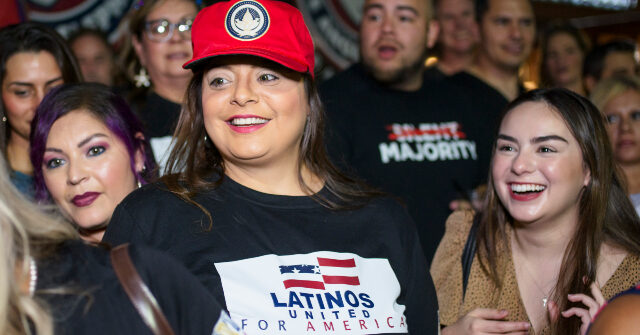In Miami’s Little Havana, a vibrant celebration erupted following the projected victory of former President Donald Trump in the 2024 presidential election, marking a significant moment in the political landscape of Florida. Hundreds gathered on the iconic Calle Ocho, waving American and Cuban flags, as well as displaying signs supporting Trump while opposing Vice President Kamala Harris. Trump’s win, which reportedly saw him capture nearly 55% of Florida’s vote, holds historical significance as he became the first Republican to triumph in Miami-Dade County in over three decades, a feat attributed largely to substantial support from the Hispanic-American community. The atmosphere was jubilant, with loud salsa music filling the air alongside the clang of pots and pans, a reflection of Miami’s tradition of outdoor celebrations in the event of major victories, whether in sports or politics.
Local media captured the joyous scenes, with many supporters donning recognizable red “Make America Great Again” hats, as well as waving Trump campaign flags. The historic significance of Trump’s victory in Miami-Dade cannot be overstated, especially considering the demographic shifts and changing political attitudes among Hispanic voters. His connection with this community was marked by a notable increase in support, as he garnered 25% more Hispanic votes compared to the previous election in 2020. This shift is further emphasized by a national exit poll, revealing Trump received 45% of the Latino vote nationwide, a stark improvement from the 32% he achieved in 2020.
The celebration in Little Havana was not only a local event but a manifestation of broader themes within the 2024 election. Trump’s dedication to anti-communist policies resonated deeply, especially within the Cuban-American community in Florida that has witnessed the repercussions of the Communist regime in Havana. Policies initiated during his first term included ensuring American financial support did not fuel the Cuban government. These measures coincided with a noted decline in the arrest of political dissidents. By emphasizing these issues, Trump secured a unique position as a champion for the Cuban exile community, aligning his campaign rhetoric with the lived experiences of many voters.
The celebrations particularly aimed homage to the historical struggles faced by the Cuban-American community, with supporters paying tribute to past tragedies such as the shooting down of the humanitarian flight operated by Brothers to the Rescue by Fidel Castro’s regime. Trump’s actions and policies are frequently recalled within this context, and his administration’s focus on memorializing victims of oppressive regimes has fortified his support base. His efforts to roll back previous administrations’ policies viewed as accommodating the Cuban government earned him deep respect and loyalty among voters looking to distance themselves from a painful past.
Among the celebrations, cultural elements such as music played a pivotal role in reinforcing the collective enthusiasm of the crowd. “Trump Song,” performed by the Cuban-American group Los 3 de la Habana, became a popular anthem among supporters, having been adapted to celebrate Trump’s electoral win rather than merely express intent to vote for him. The cultural ties within the celebration highlight how closely intertwined music, identity, and politics can be in Miami, particularly among Cuban-Americans who utilize such means to express their solidarity and collective identity in the face of significant political changes.
As the results are further analyzed, Trump’s performance among Hispanic voters will undoubtedly be scrutinized, particularly in the context of an election cycle that continues to evolve. With Florida set as a pivotal battleground state, the implications of his victory stretch beyond the state itself, posing questions about future electoral strategies across various demographics. The celebrations in Little Havana underscore the importance of cultural identity and communal support in shaping political narratives, exemplifying how local communities respond to national election results with both passion and a sense of history, serving as a microcosm for broader electoral trends and shifts in the United States.

